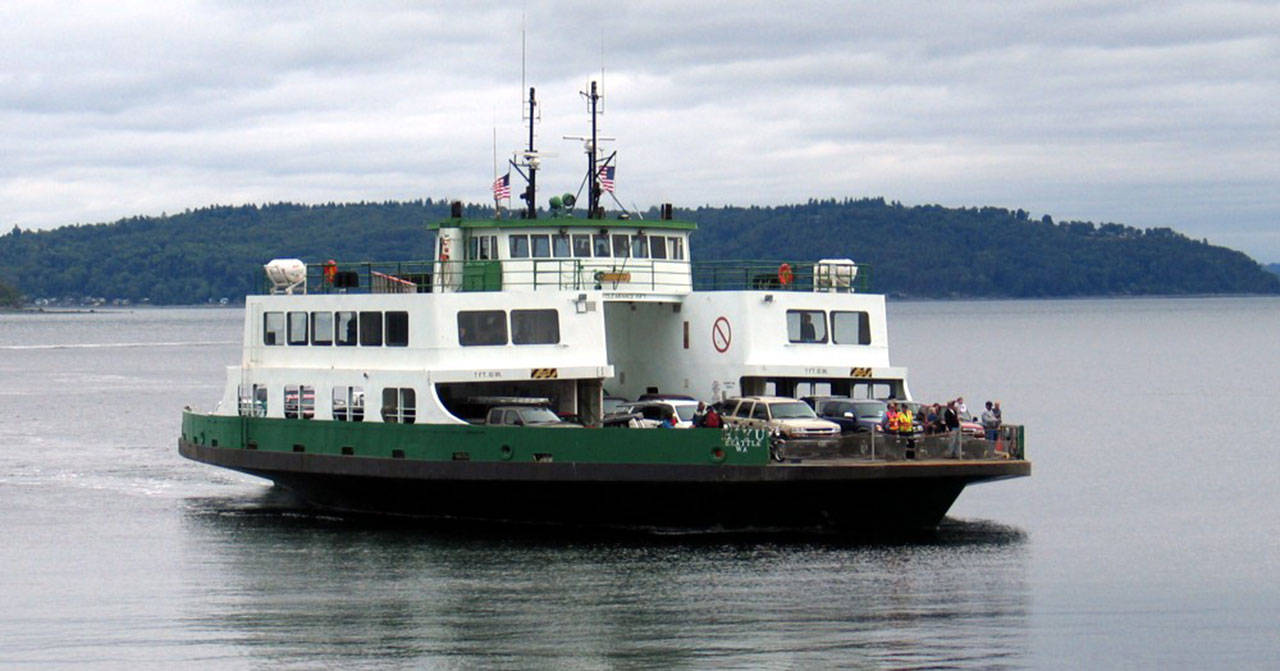By Bruce Haulman and Terry Donnelly
For The Beachcomber
Vashon was described as an island that was “spacious, fertile, shielded by poor ferry service and a water shortage,” and that hoped to “remain a reminder of the Old Puget Sound” by writer John S. Robinson and photographer Mike Urban in a May 3, 1989, Seattle Weekly article titled “Odd Island Out.”
To read that article 30 years later is to reflect on how the island has changed and yet in many ways remained the same during the past three decades.
This two-part series reflects on Robinson’s observations about Vashon in 1989 and assesses how the island has changed, and not changed, over the intervening years.
The 1989 Weekly article begins with Robinson watching orcas from the South End ferry Hiyu, quoting Betty MacDonald’s “Onions in the Stew,” and concludes by calling Vashon “a quiet haven in a roaring sea of progress.” In between, in the heart of his article, Robinson compares the village of Burton with the village of Des Moines, where he grew up in the 1930s, and which by the 1980s had been swamped in the urban sprawl that stretched through much of the Puget Lowlands.
The ferry system was his explanation of why Vashon was preserved. In 1989, he characterized the ferries as “slower… cost too much … tend to fall behind schedule … are often overloaded … and control the lives of countless human victims who are wholly at the mercy of their iron schedules.” In some ways, not much has changed!
In addition, Robinson speculated that Vashon had remained “under-developed” (a loaded term that assumes development is a good thing) because of a limited water supply and a growing militant resistance to over-development. He predicted that a spirit of “Lesser Vashon with a vengeance” would prevail and keep the island from developing as rapidly as the mainland.
Robinson saw the forests and fields of Vashon as a reminder of the time when Vashon was mostly agricultural — the “foodshed” of Seattle, with a cooperative at the Pike Place Market called the Vashon Growers’ Association. By the 1980s, this agricultural past was replaced by farms, but of a different kind that featured exotic Arabian horses, pigmy goats, Scottish Highland cattle, and “bemused Peruvian llamas.”
Some remnants of the past still survived in 1989, including Augie Takatsuka and Tok Otsuka’s You-Pick strawberry fields, where Queen Ann Thriftway would send crews of pickers each year to get choice local Vashon Island strawberries for their upscale customers. Robinson also featured Betsy and Bob Sestrap’s Wax Orchards, which had made the pivot from growing fruit, mostly apples, to now producing “a line of preserves, fruit syrups, and toppings”; and Pete Shephard’s Maury Island Farm that took advantage of the abandoned currant plants he discovered on his property and developed a line of preserves and fruit toppings.
Highlighting island businesses, Robinson focused on K2, which at that time was producing skis sold all over the world, Stewart Brothers Coffee, Island Spring Tofu, Sound Food Restaurant, the Malt Shop, and Owen’s Antiques in the Old Fuller Store. He identified the island’s environmental movement by featuring Doug Dolstad and Brad Wetmore’s Pure Sound Society. His focus on Vashon Island writers featured Rayna Holtz’s “Vashon Author Day” which included Dan Chasan reading his Audubon Magazine essay about the Western Red Cedar, and Ellen Kritzman’s writing about small mammals.
And, not to slight the performing and visual arts, Robinson highlighted the work of Vashon Allied Arts and The Blue Heron, Drama Dock, and individual artists including Eric Nelson’s wood-fired kiln, Art Hansen’s paintings and lithographs, and island music performances.
Robinson concludes his look at Vashon with the observation that once island residents feared “the bead-bedecked hippie, this year’s menace is the briefcase-toting yuppie. Will the hitherto laid-back island fill up with this threatening species? Will its prized rural character be compromised?” His response to his own question is “Not to worry … the islanders’ worst-case scenario seems unlikely to occur.” His reasoning was that limited water supply, militant resistance to overdevelopment, and a “Lesser Vashon with a vengeance” would prevail.
All of the businesses Robinson featured, except Island Spring Tofu, are gone, replaced by different businesses; the farms and orchards he featured are gone, replaced by a new form of farming; the emerging environmental movement and arts scene he featured has exploded and expanded dramatically; and, for many, the worst fears of gentrification — a term, which only began to be used by academics in 1964, and was still too new for him to use in 1989 — has indeed engulfed the island.
So, what has changed on the island since 1989? What caused these changes? How would Robinson assess the island today? Is Vashon still the odd island out, or would he see Vashon as the odd island in? I suspect the latter, and next week, I will look at Robinson’s assessment through a thirty-year lens.
Bruce Haulman is an island historian. Terry Donnelly is an island photographer.


